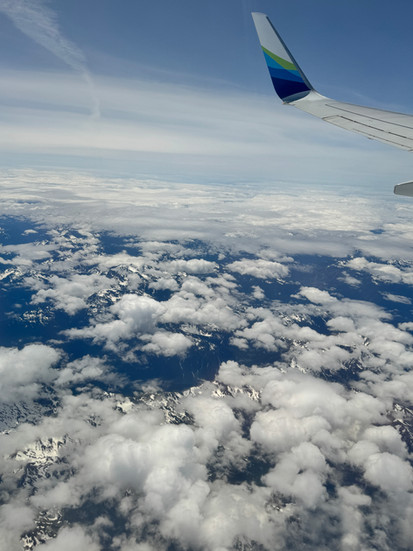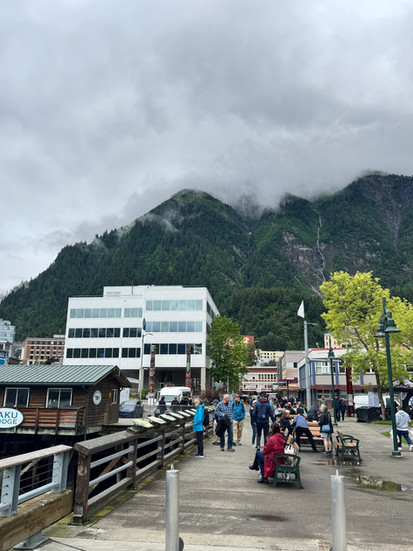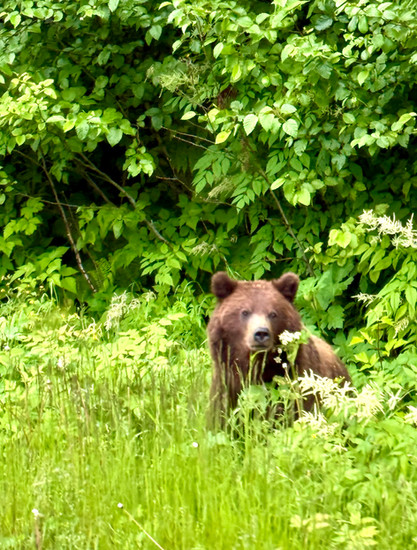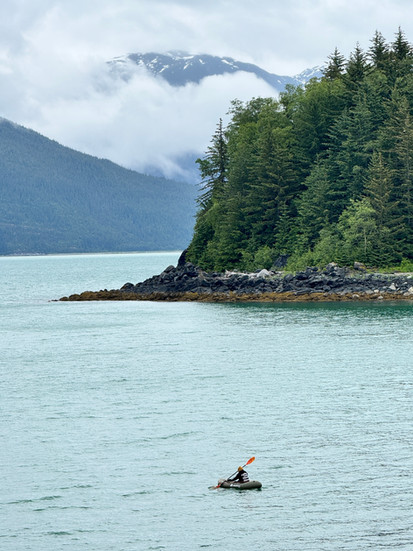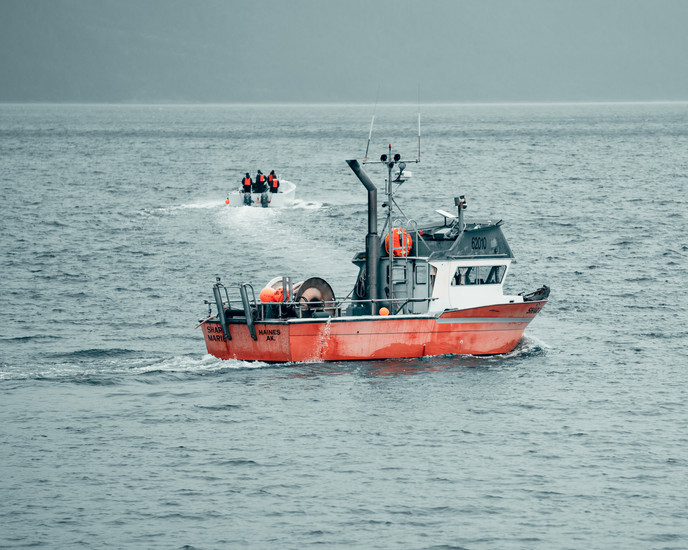Into the Wild: 6 Days Exploring Alaska With National Geographic Expeditions
- Laksventures
- Aug 31, 2025
- 8 min read
“The plants and animals are our oldest teachers. The only way to learn from them is to be in their presence.” — Robin Wall Kimmerer
Alaska isn’t just a place. It’s a presence. A force of nature that humbles you, stretches your soul, and rewires the way you see the world. This summer, I joined the National Geographic Lindblad Expeditions aboard the Sea Lion to explore Southeast Alaska — and what unfolded was six days of cinematic wild beauty, immersive cultural stories, and unforgettable encounters with nature.
Here's everything we saw, learned, and lived — plus pro tips if you're thinking about taking this once-in-a-lifetime trip.
🗓 Day 1: Juneau — Alaska's Capital With Gold in Its Veins
Welcome to Juneau, the only U.S. state capital not accessible by road. Nestled between the Gastineau Channel and the Coast Mountains, Juneau is rich in history, wilderness, and wildlife.
📍 Did you know? Juneau was founded during the gold rush of 1880 and sits atop a complex network of historic mines. Remnants of the Treadwell and Alaska-Juneau Gold Mining Companies still shape the landscape.
Before embarking on the National Geographic Sea Lion, I explored Juneau’s food scene and stayed at Silver Bow Inn, a cozy boutique hotel with self-serve breakfast and a killer location.
🍴 Top eats:
Tracy’s Crab Shack: Try the tent version for a casual, local vibe. Their king crab legs and crab bisque are legendary.
In Bocca Al Lupo: Juneau’s standout Italian spot. Reserve in advance.
🚢 Embarkation began at Harrigan Centennial Hall. After check-in, we were greeted with cocktails and an introduction to the expedition staff — scientists, naturalists, photographers, and historians ready to guide the journey.
🧊 Day 2: Tracy Arm-Fords Terror Wilderness — Glacial Majesty
We awoke in Tracy Arm, a deep fjord carved by ancient glaciers within the Tongass National Forest, the largest temperate rainforest in the world. Zodiac cruises brought us face-to-face with floating ice, glacial blue meltwater, and towering waterfalls.
🌍 Fun Fact: Tracy Arm is over 30 miles long and flanked by cliffs rising 3,000 feet high. It’s home to the Dawes Glacier, which still actively calves — a process where massive chunks of ice break off and crash into the sea, creating icebergs.
🦭 Wildlife Watch: Harbor seals rest on icebergs to avoid orcas, while mountain goats cling to near-vertical cliffs. Bald eagles circle overhead, and if you're lucky, you might even see humpback whales feeding in the fjord’s nutrient-rich waters.
🎓 Expedition guides explained the science behind glacial movements, fjord ecosystems, and the impact of climate change on tidewater glaciers.
📷 Day 3: Haines — Culture, Eagles, and Camera Rolls
Set along Lynn Canal, one of the deepest fjords in North America, Haines blends raw Alaskan wilderness with rich Indigenous culture and a thriving artist community.
🏔 Did you know? Haines is known as “The Adventure Capital of Alaska,” but it's also home to the Chilkat Bald Eagle Preserve, which hosts the largest seasonal congregation of bald eagles in the world.
Here’s what I explored:
📷 Photo Walk – Guided by a National Geographic photo instructor, I learned composition and storytelling techniques while snapping the dramatic landscape.
🌊 Klukwan Cultural Tour & River Float – We visited the Jilkaat Kwaan Heritage Center to see the famed Whale House artifacts — sacred carvings never before publicly displayed — then floated through the eagle preserve along the Chilkat River.
Other guests took on the Mt. Riley hike (a 5-hour climb to panoramic alpine views) or explored Haines Sheldon Museum, breweries, and bike paths.
🎨 Trivia: Haines has more artists per capita than any other town in Alaska.
🥾 Day 4: Sullivan Island & St. James Bay — Bear Country Immersion
Our original plan to visit Icy Strait shifted due to weather, but Alaska’s wildness never disappoints. We explored Sullivan Island and St. James Bay, both rich in biodiversity and secluded beauty.
We landed by Zodiac directly into the shallows, wearing heavy-duty XTRATUF boots — a staple in every Alaskan’s wardrobe, known for handling temperatures as low as -40°F (-40°C).
🐻 Bear Safety 101: We hiked in an area dense with brown bears (also called grizzlies), so carrying snacks were strictly forbidden. A bear’s sense of smell is 2,100 times more powerful than a human’s, able to detect scents from over 20 miles away.
🔭 Wildlife Watch: Steller sea lions hauled out on rocky coasts, bald eagles nested in Sitka spruce, and humpback whales breached in the channel.
🎓 Onboard sessions included:
Bald Eagle Biology
Photography in Remote Environments
Cultural History of Southeast Alaska
🛶 Day 5: Freshwater Bay & Pavlof Harbor — Kayaks and Bears
We entered Freshwater Bay off Chichagof Island, a place with the highest concentration of brown bears in the world. Our morning adventure took us kayaking around Pavlof Harbor, a small inlet framed by dense forest and a cascading waterfall.
🌊 Fun Fact: Despite its name, Pavlof Harbor is not a port but a hidden wilderness cove. The area is named after Russian influence in Alaska during the 1800s.
🦫 Wildlife Watch: Along the coast and in the tidal river, we spotted signs of bears, otters, sea stars, and nesting seabirds.
💥 Bonus thrill: The Polar Plunge, where brave souls jumped into the frigid Alaskan waters from the ship.
🎓 Our final lectures included:
The difference between brown and black bears
Tlingit mythology surrounding animals
How Alaska’s fjord systems were carved by glaciers over 20,000 years ago
🏞 Day 6: Sitka — The End of the Trail
We docked early in Sitka, a town with a deep Tlingit and Russian history. Known as “Shee Atika” by the Indigenous people, Sitka was colonized by Russia in the 1800s and sold to the U.S. in 1867 — a transfer marked by the ceremonial lowering of the Russian flag at Castle Hill.
🎥 Fun Fact: Parts of the movie The Proposal (yes, the one with Sandra Bullock and Ryan Reynolds) were filmed here — though most scenes were actually shot in Boston and Massachusetts stand-ins.
Before heading to the airport, we walked through Sitka’s quaint harbor and admired St. Michael's Russian Orthodox Cathedral — a rare architectural gem in the U.S.
🧭 Why National Geographic Lindblad Expeditions Are Next-Level
This isn’t your average cruise — it’s a floating classroom, a wildlife safari, and a photography masterclass all in one. National Geographic’s partnership with Lindblad Expeditions delivers something rare: the luxury of exploration, the thrill of discovery, and the joy of learning, all led by world-class experts.
Here’s what sets it apart:
🚫 No Fixed Script
Forget cookie-cutter itineraries. Each route is handcrafted daily based on weather, tides, and wildlife activity — so you’re always in the right place at the right time.
🌿 Deeply Rooted in Nature & Culture
From glacier science to Indigenous storytelling, every experience is designed to deepen your connection to the land, animals, and people of the region.
🧠 Expert-Led Learning, 24/7
You’re not just observing — you’re understanding. Naturalists, marine biologists, historians, and National Geographic photographers are onboard to guide excursions and host nightly presentations.
🛥 The Small Ship Advantage
With only 62 guests, the Sea Lion offers intimate access to remote areas that big ships can’t reach. Think hidden coves, glacier-fed fjords, and secret bear-viewing beaches.
🥾 Active by Design
This is not a sit-and-sip kind of cruise. Daily adventures include:
Zodiac safaris through iceberg alleyways
Guided hikes through old-growth forests
Early morning wildlife sightings
Kayaking past waterfalls and bear habitats
🌍 Authentic Cultural Encounters
Visit Indigenous villages, hear firsthand stories from local communities, and experience Alaska’s rich heritage in ways that are respectful, personal, and unforgettable.
📌 How to Book a National Geographic Alaska Expedition
Ready to answer the call of the wild? Booking your own National Geographic Lindblad Expedition to Alaska is simple — and absolutely worth it.
✨ The Trip I Took
“Alaska Escape: Haines, the Inian Islands, and Tracy Arm Fjord”
🚢 Aboard the small but mighty National Geographic Sea Lion (max 62 guests)
📍 Operated by Lindblad Expeditions, in partnership with National Geographic
🗓 Duration: 6 days / 5 nights
💡 Focus: Wildlife encounters, glacier exploration, Indigenous culture, and active adventure
🌐 Explore this voyage and others at www.expeditions.com
🗺️ How to Book Your Alaska Adventure
Visit the Official Site
Browse available voyages at National Geographic Expeditions – Alaska.
Choose Your Itinerary
Options include:
Inside Passage
Glacier Bay National Park
The Aleutian Islands
Or longer routes combining multiple ecosystems and regions
Pick Your Dates & Cabin Type
Cabin categories vary from cozy singles to ocean-view staterooms with large windows. Summer departures (June–August) are especially popular.
Book Online or By Phone
📞 Call 1-800-397-3348 to speak with a travel specialist
🖥 Or reserve directly on expeditions.com
🧳 Alaska Expedition Cruise Traveler Tips
Alaska doesn’t play by vacation rules — it plays by nature’s rules. Here’s what you need to know to stay warm, dry, and camera-ready on your expedition.
📅 Best Time To Go
June–August: Peak wildlife, milder weather (approximately 50–70°F / 10–21°C), and long daylight hours (up to 18 hours of sun!)
May & September: Fewer crowds, better prices, more dramatic lighting — but expect chillier temps and less wildlife activity
Pro Tip: Wildlife sightings can’t be scheduled. Flexibility = more magic.
🎒 Packing Essentials (Beyond the Obvious)
XTRATUF boots or knee-high waterproofs: Required for wet Zodiac landings — most people onboard will wear these daily.
Layered Clothing (Base, Insulating, Shell): Temperatures can swing more than 30°F (about 17°C) in a single day. Merino wool and waterproof outerwear are your MVPs.
Dry Bag or Waterproof Pack: Protects your camera, phone, and snacks on Zodiac rides or kayaking trips.
Binoculars (8x or 10x): Game-changer for spotting eagles, whales, and bears from the ship.
Gloves + Beanie + Sunglasses: Even in summer — windchill on deck is real.
Motion Sickness Bands or Medication: Some crossings can get bumpy (especially in Peril Strait).
📸 Photography Tips From the Field
Golden hours (early morning, late evening) = soft light, better contrast on wildlife and landscapes
Use burst mode or fast shutter speed for capturing whales, eagles, and fast-moving wildlife
Don’t just zoom — tell a story. Wide shots of the landscape give context and mood, especially when mist or glaciers are involved
Bonus Tip: Nat Geo photographers onboard often host tutorials or will coach you during outings — take full advantage.
🐻 Health, Safety & Wild Encounters
Follow bear safety protocols: No food on hikes. Speak up, hike in groups, and listen to your guides.
Dress waterproof, not just warm: Alaska doesn’t rain all the time — just frequently and suddenly.
Respect wildlife distance: Bears, sea lions, and eagles look majestic from afar — and terrifying up close.
Stretch & hydrate: Excursions can last several hours. Stay limber and fueled.
Mental Prep: Expect early mornings (breakfast at 6:30–7:30 AM), full days, and spontaneous changes based on weather and animal sightings. Embrace the unpredictability — that’s what makes it unforgettable.
🏔 What Alaska Leaves Behind
Alaska changes you.
It’s not just the landscapes — it’s the realization that wild still exists: untamed, awe-inspiring, and thriving beyond our reach. And with that comes a quiet responsibility to protect what we’re lucky enough to witness.
If you’re craving an adventure that balances adrenaline with awareness, a National Geographic–Lindblad expedition is worth every step, splash, and sunrise. Just bring your curiosity... and a pair of XTRATUF boots.
You’ll come back with muddy soles, memory cards full of wildlife, and a deeper reverence for the world we still don’t fully understand.
Alaska is waiting — and it remembers those who listen.
🎥 Watch My Alaska Journey Unfold
Want to see the ice crack, the bears roam, and the Zodiac landings in real time? Catch the full adventure on my Alaska Expedition YouTube Vlog.
















